Share this Post
Chili peppers are fundamental flavour-building ingredients in Mexican cuisine, and learning how to use them well can help you achieve spectacular results in the kitchen.
The Basics
What is a Chili Pepper?
Peppers are the fruit of a small number of highly variable species within the genus Capsicum. One species in particular, Capsicum annuum, provides the vast majority of pepper varieties both sweet and spicy. This article doesn't concern itself with fresh peppers (which are referred to by a number of names), but rather with the dried product made from them.
Dried peppers are generally referred to as chilies (note the comment on spelling below), though that term is used in some circles and situations in reference to fresh peppers as well (Thai bird's eye chilies are a common example).
All of the chilies in this guide are dried, shelf-stable pantry products.
Chili, Chile, or Chilli?
When dried, peppers are generally referred to as chilies, chiles, or chillies. Chile is commonly used in parts of the US, especially nearer to Mexico, and is identical to the Spanish spelling. It's also the same as the name of the country, which causes some confusion. Chili is commonly used in much of the rest of the English-speaking world, however this spelling causes some confusion and overlap with the spiced stew-like meal of the same name. Chilli seems to be something of an attempt to avert that confusion, but this spelling variant seems to be primarily limited to the UK, where it shares usage with chili.
I use chili throughout the site.
Powdered Chili vs. Chili Powder
This is where the word 'chili' gets really confusing.
Whole, dried chilies are frequently crushed to produced flakes, or ground into a fine powder. The powdered stuff is frequently called chili/chile/chilli powder. But there is also a very popular spice blend of the same name, featuring dried chilies, garlic, cumin, salt, oregano, etc. The chili powder spice blend is extremely popular in North America, especially as an ingredient in (wait for it...) chili.
This article does not deal with the spice blend, but does include a bit of information about powdered chilies. It can be tricky to avoid confusion about which one is being discussed at any given time. My best advice is to read a recipe carefully, and to choose your phrasing wisely.
Recipes
Feeling hungry? Not sure where to start with all of these chilies? Why not try out one of the Diversivore recipes that use the chilies featured in this article? They're all listed at the bottom of the page - scroll to see them, or jump there quickly by clicking here.
The "Holy Trinity"
Three particular dark, sweet, and relatively mild chilies hold a place of particular prominence in Mexican cooking, especially when it comes to their use in the various and famous mole sauces of the region. These dried peppers are often referred to as the "Holy Trinity" of Mexican chilies. They feature prominently in many Mexican dishes, including the aforementioned moles, as well as in soups and sauces. In fact, all three of them are sometimes used together in order to achieve a particularly rich and complex flavour.
Ancho
Ancho chilies, are dried, ripe poblano peppers. Ancho chilies, like fresh poblanos, are generally low in heat, with a distinctively sweet and raisin-like fruity flavour.
Ancho chilies are extremely popular, and are often given a starring role in dishes. Like all of the Holy Trinity peppers, they feature in many moles and sauces, but they are also very popular across a broad range of Mexican, Tex-Mex, and fusion dishes. They also tend to be a little easier to find that some of the peppers on this list.
SHU: 1,000-2,000 (fairly mild)
Mulato
Mulato chilies, are dried variety of poblano pepper, picked when very ripe. Mulato chilies are moderately hot, with a sweet, fruity, slightly smoky flavour. They're highly appreciated for the distinctive chocolate/cherry/licorice notes that they impart to a dish.
Mulato chilies are generally the hottest member of the Holy Trinity, though pasillas can sometimes approach the same level of spice. Mulato chilies are extremely popular in Mexico, but are not as well known outside of the country.
SHU: 2,500-3,000 (moderate)
Pasilla
The Pasilla chili, (aka chile negro) is a dried, ripe, chilaca pepper. Pasillas are elongate, thin, and tapering, with wrinkled, nearly black skin. Their flavour is fairly similar to that of an ancho chili, with raisin and coffee notes. They also tend to be a little hotter than ancho chilies.
Pasilla chilies are the victims of frequent mis-labeling, and are often confused with anchos and (oddly) fresh poblanos. True pasilla peppers can be a little harder to find than some of the other peppers on this list. In my experience, if the packaging is labeled 'chile negro' however, they're less likely to be misidentified.
SHU: 1,000-4,000 (mild-to-moderate)
The All-Purpose Reds
For many of us, red chilies bring up thoughts of fiery heat, but many of the Mexican red chilies are much more important for contributing distinctive and relatively mild flavour. These chilies have certain flavour elements in common, but they vary quite a bit in character. Nonetheless, they are all important for their ability to contribute a sharp, acidic, somewhat earthy, and powerful complexion to a dish.
Many of these chilies are part of the mirasol chili group (mirasol means 'facing the sun,' named for the way the chilies grow pointing straight-up), but it's worth noting that some of the mirasol chili varieties that aren't included in this 'all-purpose' section are extremely hot.
Cascabel
Cascabel chilies are dried bola (round) mirasol chili peppers. Cascabel means rattle in Spanish, a reference to the shape and the way the seeds rattle inside of the hollow pepper. Cascabels contribute a very fruity, slightly smoky flavour to dishes without contributing a great deal of heat. Their distinctive, likable, and easy-to-spot appearance makes them a popular and relatively easy to find pepper
Cascabels are mild-to-moderate in terms of spice, and can often be used by spice-averse cooks in place of hotter peppers.
SHU: 1,500-2,500 (mild/moderate)
Guajillo
Guajillo chilies are relatively large, long, and flat dried mirasol chili peppers. Guajillos contribute a sharp, fruity, somewhat tangy flavour to dishes without contributing a great deal of heat. They’re a fairly common and popular pepper in Mexican cooking, though they tend not to be as quite well-known/used outside of Mexico.
Guajillos are moderately spicy, and fairly comparable to a cascabel or chipotle pepper of the same size. They're my personal favourite chili in this category.
SHU: 2,500-5,000 (moderate)
Puya
Puya chilies are relatively long, thin, dried mirasol chili peppers. Puyas are similar to guajillos in terms of flavour, but hotter. Puyas have a wonderful flavour, and are perhaps the best all-purpose red chili to use if you're a fan of hotter dishes.
Unlike guajillos, puya chilies tend to retain their puffy round cross-section when dried.
SHU: 5,000-8,000 (moderately high)
Smoked Chilies
Most chili peppers are simply dried, but a select handful are dried and smoked. These chilies pack a potent and very popular flavour punch, rich with spice, acidity, sweetness and (of course) smoke. The chipotles are the most common peppers in this group, but many other smoked peppers exist, often with highly regional followings.
Chipotle Meco
Chipotle meco chilies (or chipotle peppers) are a specific chipotle variety, made from dried and heavily-smoked ripe jalapeño peppers. Chipotle mecos tend to be much smokier tasting than their cousin the morita pepper. The flavourful, smoky-sweet nature of chipotles make them one of the most popular and distinctive of all of the Mexican chilies.
Chipotles vary quite a bit in terms of heat, but are generally at least moderately spicy. Because of their popularity in Mexican and Tex-Mex cooking, they tend to be fairly easy to find.
SHU: 3,000-10,000 (moderately high)
Morita Chipotles
Morita chipotle chilies (often simply called moritas) are specific chipotle variety, made from dried and gently-smoked ripe jalapeño peppers. Moritas tend to be much more fruitier tasting than their cousin the chipotle meco.
Morita peppers are often treated as a distinct pepper, separate from the more commonly used chipotle meco. They tend to work best in dishes that call for moderate smoke along with a bright fruity flavour. Availability is variable, but generally fairly good.
SHU: 3,000-10,000 (moderately high)
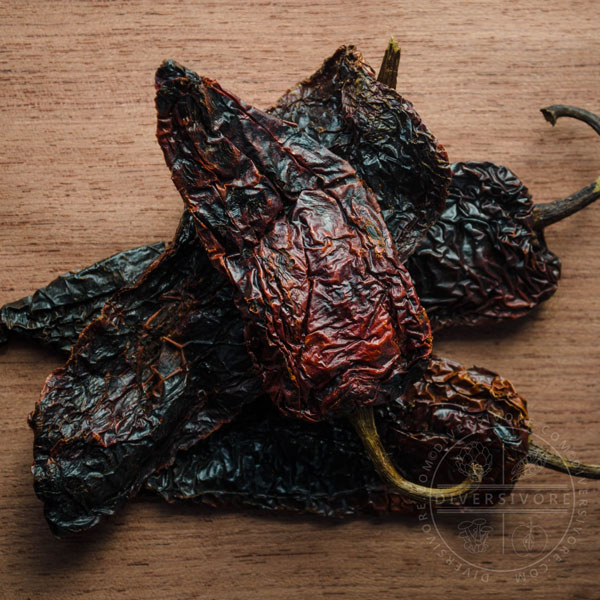
Pasilla de Oaxaca
As the name suggests, this is a type of pasilla chili. It differs from the standard pasilla however, having been smoked like its more common cousins the chipotles.
Pasilla de Oaxaca chilies are not particularly common outside of Mexico, though that is starting to shift to some degree. They're milder than their jalapeño-based cousins, but fruitier and even smokier.
These can sometimes be found at well-stocked Mexican and Latin grocery stores, but are more commonly obtained from online providers.
SHU: 1,000-4,000 (mild-to-moderate)
Bring the Heat
These are not one-dimensional fire-factories - there's still a lot of flavour to be found in these chilies. But at the end of the day, these are the peppers that are going to contribute an appreciable degree of spice to your dishes.
If you're new to cooking with chilies, or you're developing your tolerance to spice, you're going to want to start with small quantities and work your way up.
Árbol Chilies
Árbol chilies (often called by their Spanish name, chiles de árbol) are perhaps the most popular of the hot chilies in Mexican cooking. They have a clean, sharp flavour with a healthy but not overwhelming level of heat. Most notably, they have a brilliant, bright red colour that makes sauces and salsa look absolutely gorgeous.
Because they're arguably the most popular of the Mexican hot chilies, they tend to be fairly easy to find. They're also quite easy to work with, and can be adjusted in terms of heat by leaving or removing the loose seeds inside the pepper.
SHU: 15,000-30,000 (high)
Chiles Japones
Chiles japones, often sold as Chinese or Tianjin Chilies (the Pantry Page deals with some of the confusion surrounding the name), are a small, spicy red chili with a clean taste and a distinctive bite. Because they're popular in both Central American and East Asian cooking, they tend to be fairly easy to find.
These peppers pack a considerable punch, but their small size makes it easy to adjust the number you use. Seeded and membranes removed, they provide a healthy but manageable spice level that's much appreciated in Asian cooking.
SHU: 40,000-75,000 (high)
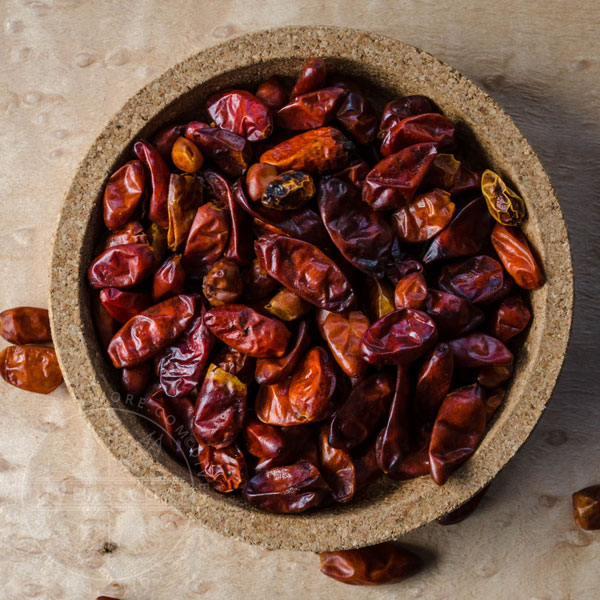
Pequin Chilies
As they so often say, big things truly come in small packages. These minute little chilies pack a fiery punch, coupled with a bold, crisp, fruity flavour. Though they can be tougher to find in some markets, they are a perennial favourite for making salsas and sauces.
Much like chiles japones, their small size makes it easy to adjust the number you want to use and the amount of spice you want to deliver. They're also unobtrusive enough to be used as heat-boosters in sauces and salsas based around other peppers.
Pequin chilies are often confused with another very small and very closely related pepper, the chiltepin. Pequins are usually oval, while chiltepins are generally quite round. The distinction is an important one however, as chiltepins are often even spicier.
SHU: 40,000-60,000 (high)
So what do you think? Did I miss something? Are there other varieties or subject areas you'd like to see covered?
Leave a comment below if you have any questions or ideas. This is designed to be a living, breathing resource - any time new or better information can be presented to you, it will be added here.
Don't want to miss any changes, news, recipes or features? Make sure to subscribe to Diversivore's updates. You'll only receive emails about the site, and we'll never share your information with anyone. EVER.
Be sure to check out the individual pages for more information on finding, choosing, and using all of these peppers, and don't forget to check out some of the other Pantry Pages, Ingredient Pages, and articles in the Education section while you're here. Oh, and let's not forget RECIPES, including all of the Mexican recipes right below here.
Share this Post
Recipes Featuring Mexican Chilies
Chicken Tinga
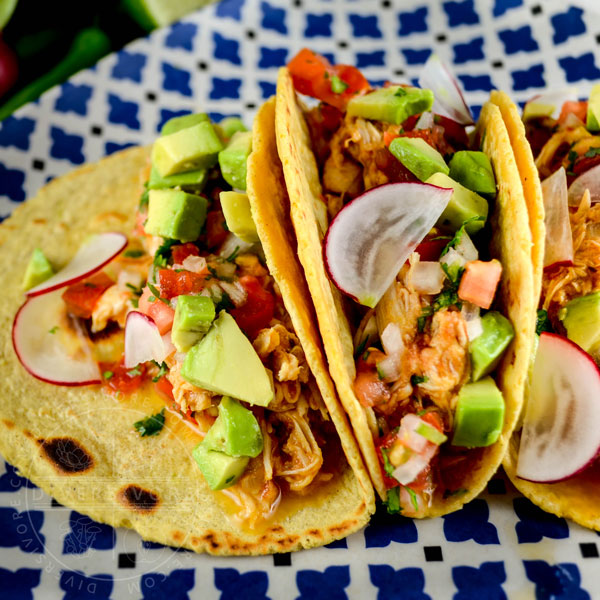
A great, weeknight-friendly meal with a scratch tomato sauce that uses chipotles in adobo sauce (easy to find in stores and a great intro to using Mexican chilies!)
Instant Pot Brisket
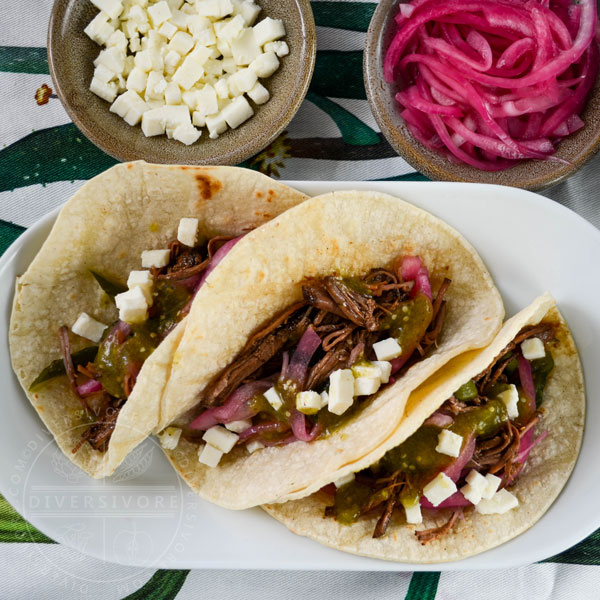
Made with two kinds of chilies (pasilla and morita chipotles), the only thing better than this delicious homemade adobo is how quickly the whole meal comes together with an Instant Pot (or other pressure cooker).
K'uut Bi Ik
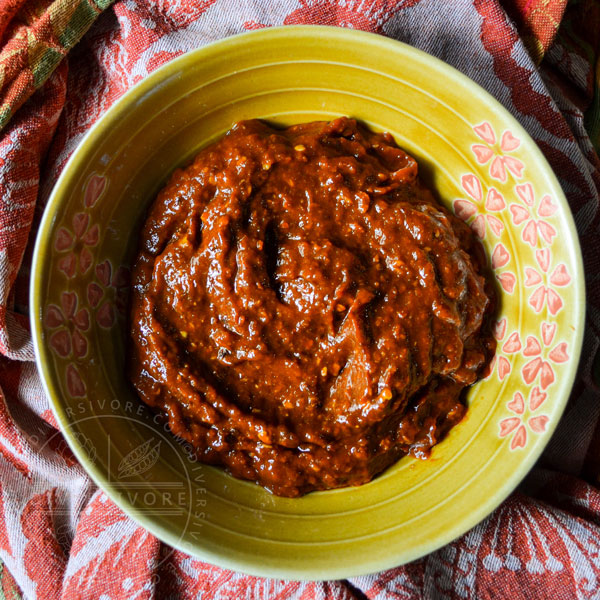
This recipe puts a smoky twist on a Yucatecan salsa made with dried chilies, incorporating morita chipotles along with fiery árbols.
Pambazos con Huevos
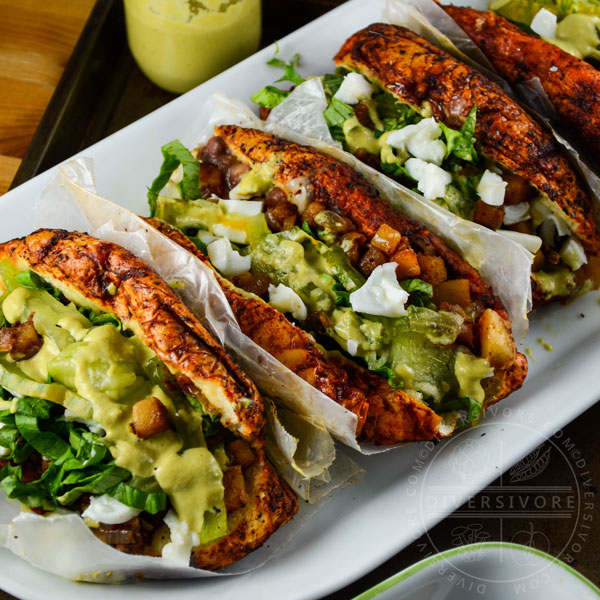
Vegetarians rejoice! The bread on these sandwiches is soaked in a guajillo sauce before pan-frying, while the filling is made with eggs, potatoes, and a creamy salsa verde.
Carne Asada Borracha
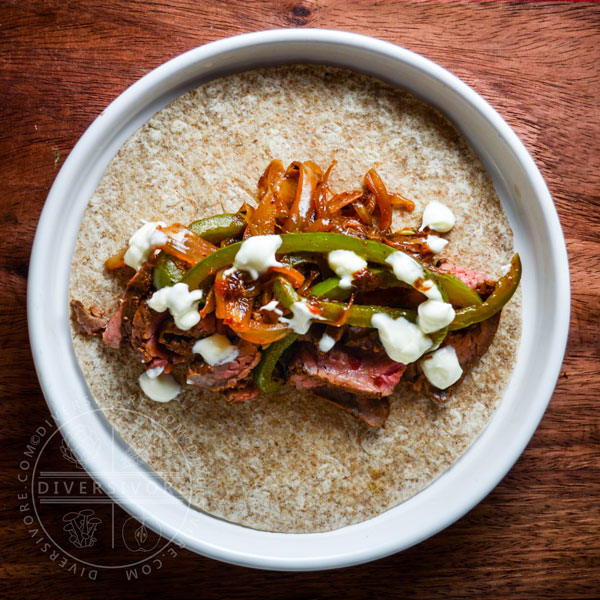
Guajillo chilies and beer make the marinade for this beef recipe really stand out. It's also a great, fast recipe to get on the grill.
Red Pipian Seafood Soup
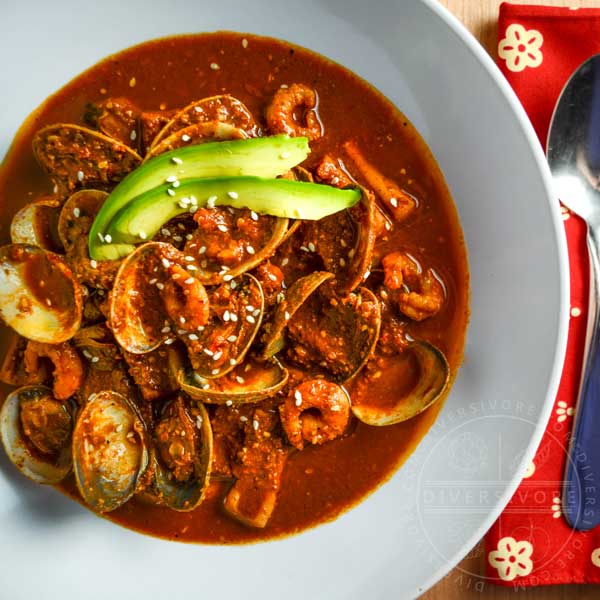
A soup based on one of the easier mole recipes, this richly spiced dish uses ancho and guajillo chilies.
Mezcalita del Ocaso
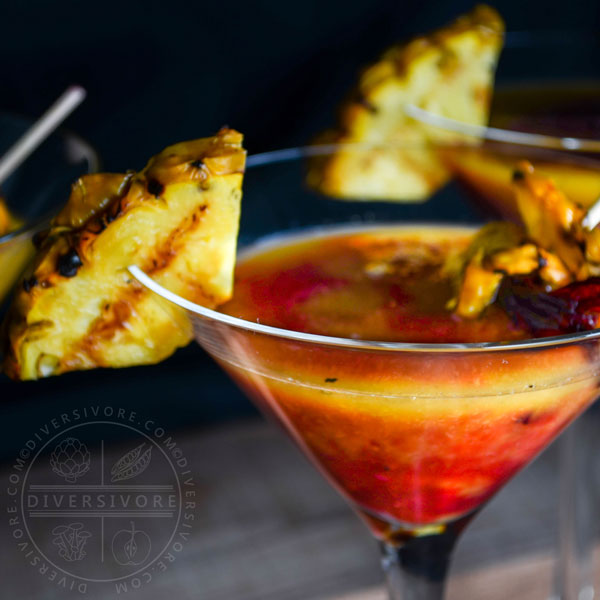
That's right, there's even a cocktail in the list! There's a lot going on in this beautiful mezcal-based drink, including grilled pineapple, hybiscus agua fresca, and (of course) a little kick from some cascabel chilies.
Oyster Mushroom Soup
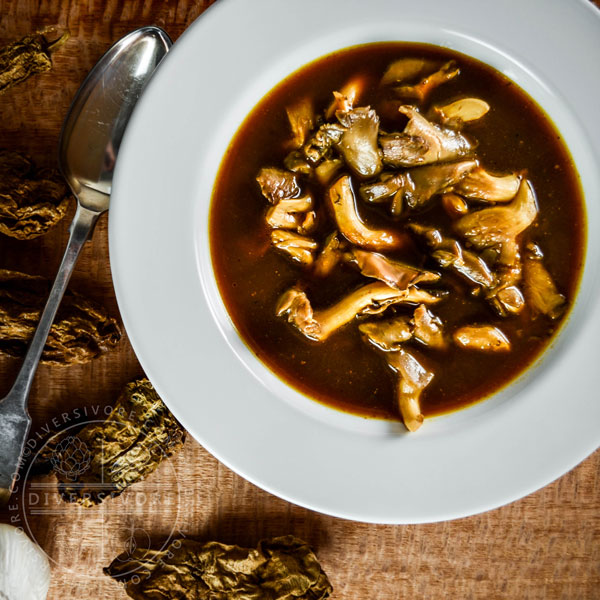
It can be hard to find good vegan Mexican recipes, but the smoky chipotle meco chilies used here add a ton of dimension to a simple, healthy soup with roots in Veracruz.
Shakshouka Rancheros
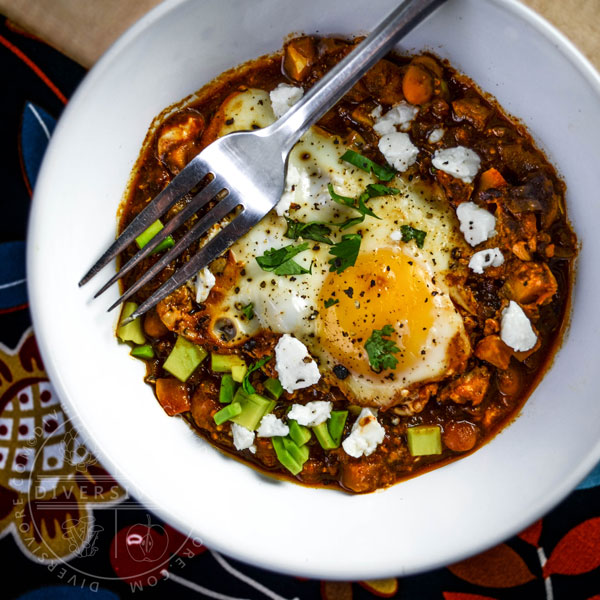
A delicious bit of fusion, combining the Middle Eastern classic shakshouka with a bunch of fantastic Mexican ingredients, including ancho chilies.


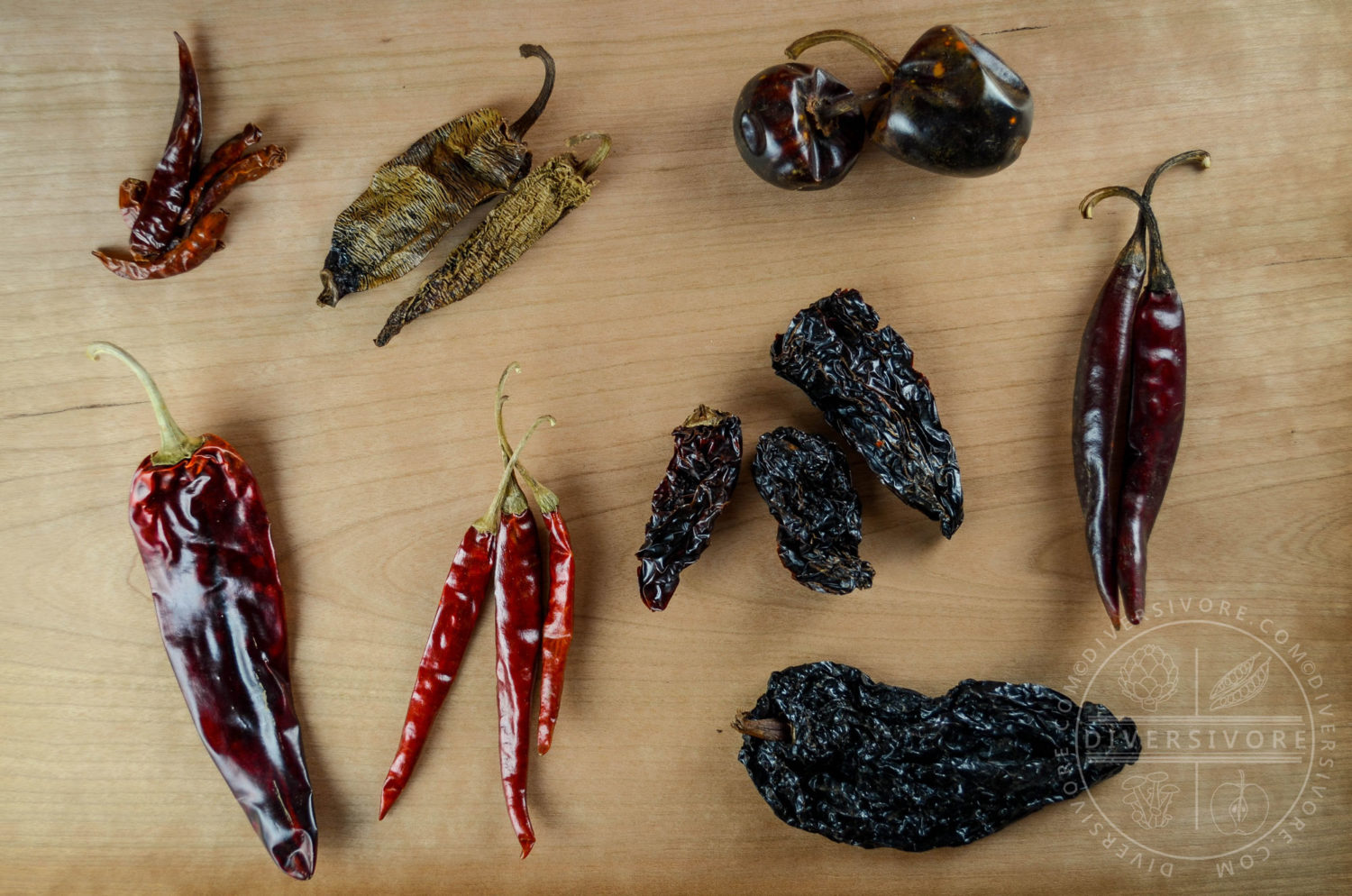
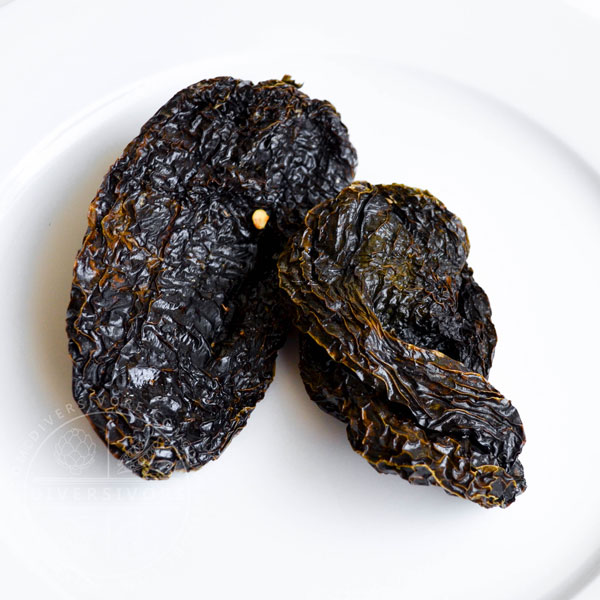
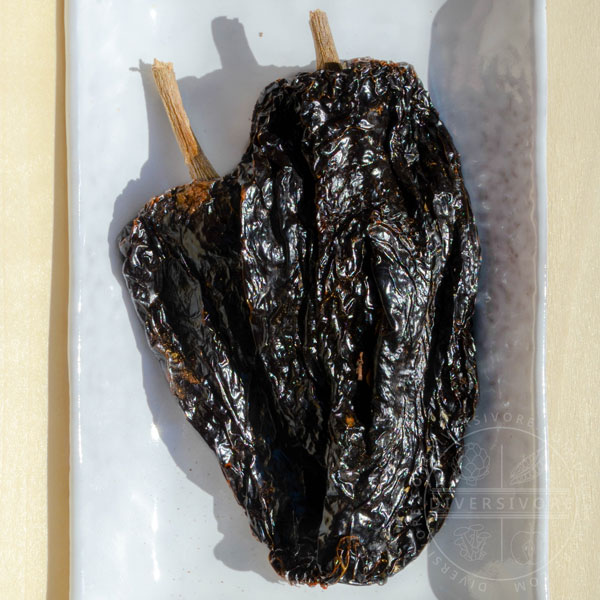
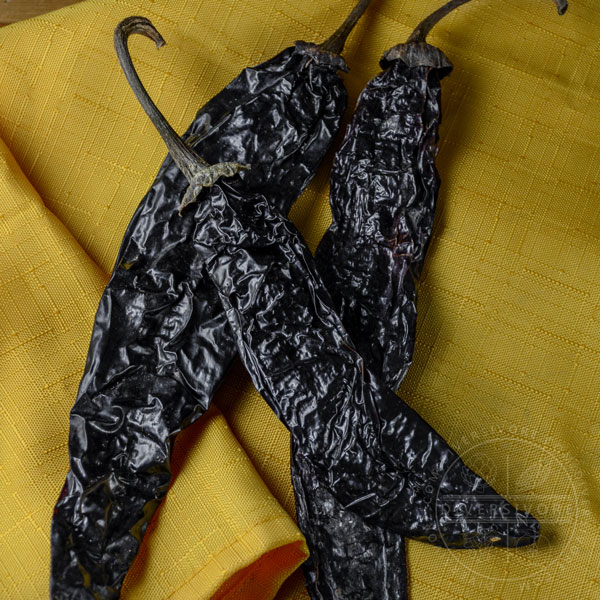
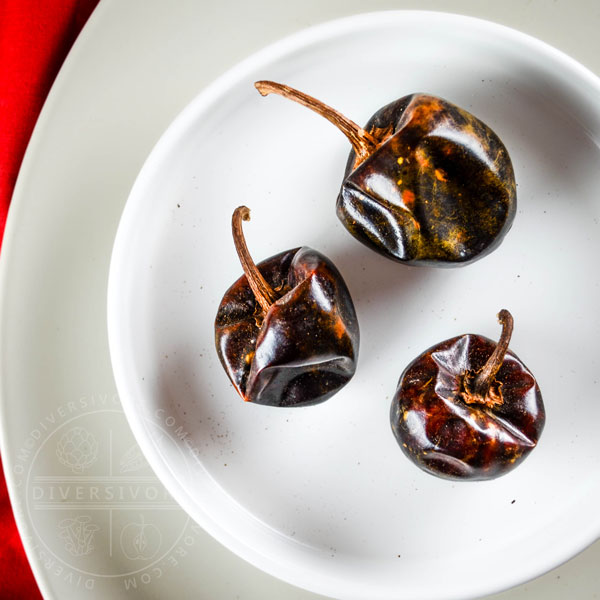
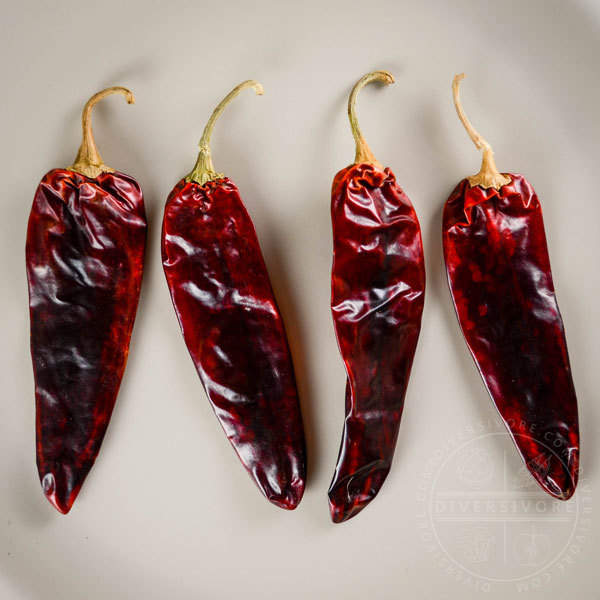
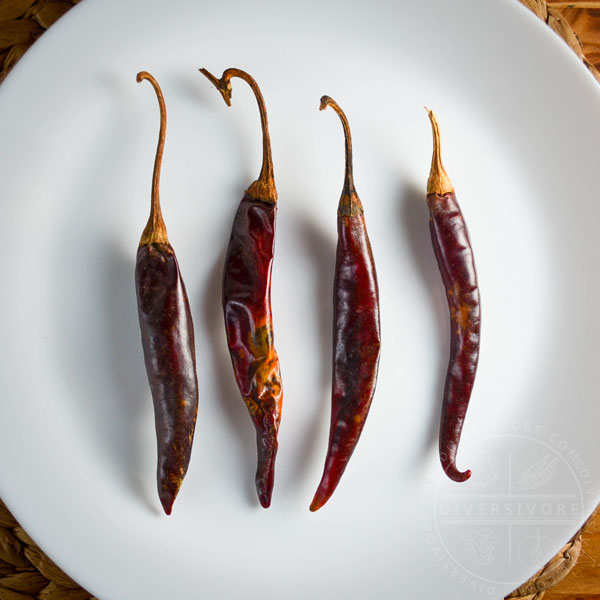
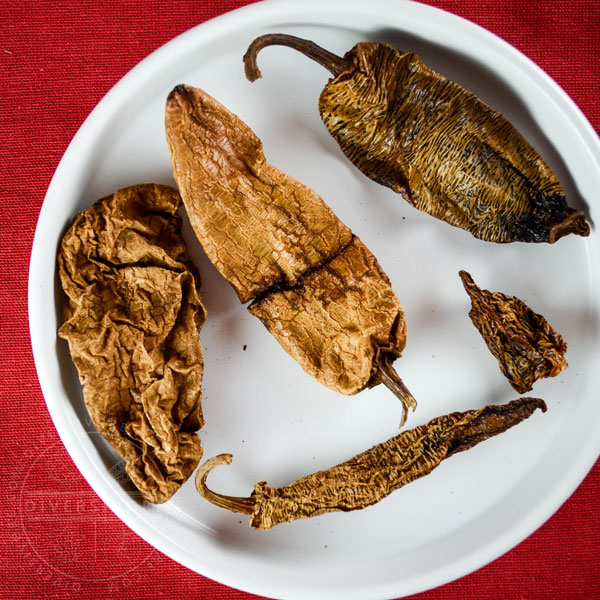
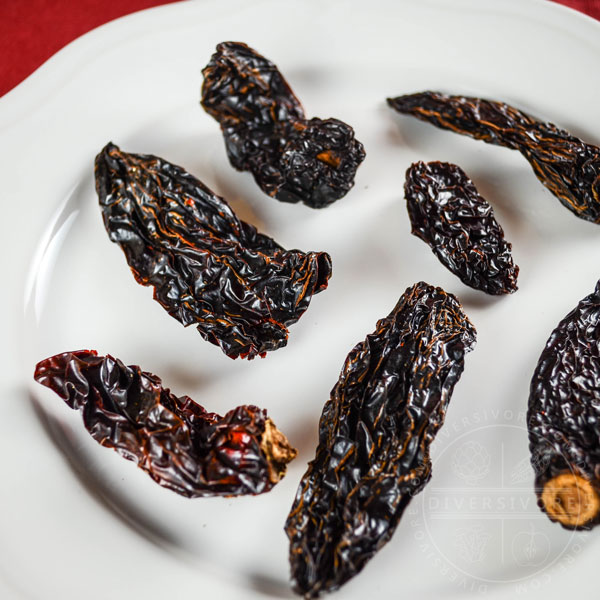
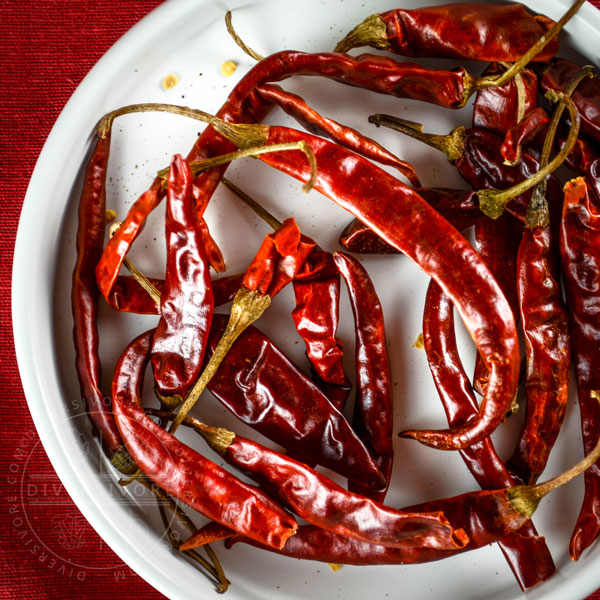
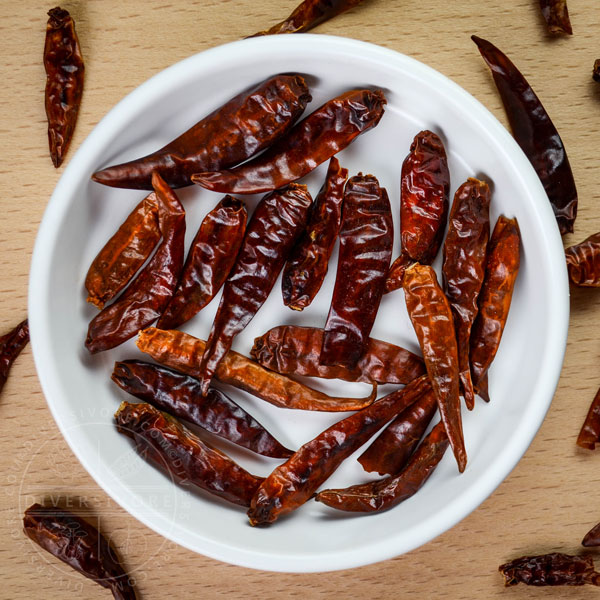
Comments
What an incredibly helpful resource! And thanks also for clearing up the confusion over the spelling of chili!! Autocorrect tries to get me every time. Great post!
Thanks Elaine! And you’re welcome – the spelling is always a bit of a mess on that one. It’s a little confusing no matter which version you use!
Useful post Sean!
Thanks Mardi! I’m glad you enjoyed it.
This is Awesome I love Chillies not just for their heat but the flavors they pack, I am currently growing Ancho chillies and been cooking them while green, but will the y go black on the plant or do I need to pick them and dry them out to go black, also do you know where can I purchase Mulato chillies seeds from? I’d like to try them out too. Cheers. Peter Sguazzato
Hi Sean
Amazing post on chili’s. The Mexican culture has one up on the world on the use and in possession of dried chili’s which you gave defined with illustration so well. Great info and one that I will use in my quest to start understanding and cooking Mexican quinine.
Great work Sean!
Have a fabulous weekend.
Excellent article, enjoyed every minute of reading it. Wonderful information.
I sure do love me some heat in my dishes! I feel like this guide will be super useful in my future endeavors. There is so much more to chilies than their heat; they have flavor! We seem to forget that sometimes. I also showed this to Nick and he bookmarked it for late night reading. All of our Asian friends laugh about the fact that he can take heat “really well for a white boy”! Seriously though — guys has an iron mouth.
Wonderful post Sean! I have actually shared this far and wide; it’s just that useful. Thanks for sharing so much value in a thoughtful post.
Sean this is such a helpful (and gorgeously illustrated) resource. They must be so time consuming to prepare but your effort are so worth it! Thank you for this!
Alright, you’ve just made my top 5 list of “most helpful blog posts ever.” Yes, the list may be in my head, but still legit! If anyone I even remotely know asks about Mexican chili peppers (or even if they’re wondering how to cook Mexican food), I’ll send them your way. Fantastic, well-researched post, Sean. 🙂 As always!
This is a very useful site, especially for chile novices. Two things I suggest. First, you should use the spelling “chile”. There is no real risk of confusing chile that is eaten with a South American country. While it is true that many English-speakers use “chili”, using “chile” conforms with the people at the heart of the dishes you feature on this blog. And this leads me to my second suggestion. You should include information about chiles found in the U.S., primarily in the Southwest. While there is some overlap with chiles used in Mexico, there are several very distinct chiles, for example, found in New Mexico. Most importantly, New Mexicans are known for using fresh chiles in many dishes. Fresh chile is most often green and is remarkably different from dishes made from dried chiles. “Chile fresco”–fresh red chiles, picked just as it ripens–is more rarely used but is once again a major departure from the other two takes on chile. New Mexico produces dozens of varieties with Hatch being the most famous around the world–tons are exported to Mexico each year. Climate, soil, and altitude provide a provenance for New Mexico chiles grown around the state. Some folks swear Hatch is the best but still others prefer Lemitar, Chimayo, Española, or any one of Native American Pueblos. At the very least I think your blog should reference the existence of an ancient chile culture within the U.S.
Thanks for the comment! I hemmed and hawed quite a bit over the spelling, and frankly there are merits to going in both directions. As strange as this might sound, one of the factors to consider is optimization for search engines – certain spellings and word choices can have an impact on the visibility of the article as far as sites like Google are concerned. Of course you’re right in saying the spelling ‘chile’ would be in keeping with the Mexican theme, but I do have to consider the linguistics of my audience. That’s not to say that I’m not willing to change – I just need to do so while considering multiple options. Thanks for your suggestion.
As for your second comment, I would LOVE to do a second feature on the chiles (chilies, chillies, heh) from the Southwestern US. For that matter, I would love to do another feature on the fresh (not dried) chilies of Mexico, and a feature on Central and South American chilies. I’ve got some aji amarillo chilies just begging to be written about. The idea here was to familiarize my readers with dried Mexican chilies, and given my tendency to go VERY far in depth with my research, I didn’t want to put too much in one post. But honestly, it make me very happy to know that you enjoyed this, AND that you’d like to see more. This kind of input is precisely what drives me when considering what I should work on next.
One issue I should note when it comes to fresh chilies (especially highly local varieties) is that I’m in Canada, so it can be tricky to track down some of the varieties that are popular in Mexico. But rest assured, if I can get them, I’ll write about them!
Cheers, and thanks for taking the time to comment.
I had not considered SEO. Fair enough. I appreciate that you put the info out there for all to see and understand. So many food bloggers don’t seem aware of the etymology or its significance.
If you need suggestions on sources for fresh or dried chiles from New Mexico, I would be happy to send you some links. The harvest is almost done for this year but getting fresh roasted/frozen chiles will be possible for another of weeks from the local producers. The large commercial producers have frozen green chiles year round but the quality and flavor is quite low. Of course, dried varieties are available year round from small farms and producers. Let me know. Keep up the good work, your blog is very attractive, efficient and useful.
Thank you so much! There are so many amazing products to showcase in the USA, and it’s made even more tempting given that I’m so close to the border, but when I think about dealing with agricultural import restrictions (and the associated costs!) it gets discouraging. That being said, you’ve encouraged me to look into the logistics of it for next year, and to investigate dried Southwestern Chilies. I just dried a batch of habanero peppers the other day, so I think the pepper-bug remains firmly planted in my mind.
I’m a big fan of languages, and it’s fun for me to discuss etymology, but I think you’re quite right – a lot of people don’t consider the significance of words when it comes to food. Given that Diversivore is dedicated to encouraging and educating, I feel it’s my duty to try to wade through the confusing nomenclature and language issues in order to try to get people cooking with confidence (and accuracy – nobody wants to ruin a meal thanks to a linguistic mixup!).
Thanks for the kind comments, and I’ll be sure to get in touch when I can sort out the logistics (and get caught up with all my existing projects!)
Sadly that the Chile Pequine was left out in the cold, I love them in a pico de gallo or eaten straight of the plant
Hi Johnny! The main reason I haven’t included those yet is that I don’t have access to any good quality ones at the moment. Because I photograph and work with all my ingredients myself, I don’t like doing a writeup on something unless I can actually obtain it and give it a proper treatment. I plan on growing this list any time I’m able to get my hands on good qualities chilies. Pequin peppers are a bit of a funny one given that they are popular in both fresh and dried formats, but that’s really an issue for another day. But your input is duly noted, and hopefully you’ll see them here some time in the not-too-distant future.
Great info, although you left out one of my favorites chili pequin
Hi Martha! I’m glad you’ve found the information useful. Another commenter has also mentioned the Chili Pequin, and I do hope to add it to this list soon. I don’t have access to any at the moment, and I only write about the chilies I can actually get my hands on to work with. But there are new additions coming to this list soon, and hopefully I can get some dried pequins! Cheers.
Great resource Sean. The Chile Pasilla de Oaxaca is one you might want to consider in the future. It’s another of the smoked chiles and very flavorful.
Hi Kip! Thank you. Glad you like the guide. Funny you should mention the Oaxaca – I just found some quite recently, and they’ll be making an appearance here in the not-too-distant future!
Great site Sean. Another one for the list – Chilhuacle Negro, essential for an authentic Oaxacan black mole.
Thanks Tom! I have some Pasilla de Oaxaca chilies right now that I’m looking forward to writing up, but I’ll keep my open for the Chilhuacle Negro! I should start up a patch in my garden this summer and try to grow some of these harder-to-find ones myself!
Habanero is missing
Hi Patricia. This article doesn’t cover fresh chilies (though a future article will). I may add dried habaneros in the future, as I do have a list of chilies to add, including pequin, Oaxaca, and costeno. I have habaneros that I dried myself, so they’ll most likely make an appearance in the future. Cheers.
Pingback: Mexican Favorites For Cinco De Mayo! - Best Market
I’m looking for a good dried chili to cook with the pork when making Carnitas the traditional way in a Caso (big copper pot) I was thinking Pasilla or Guajillo might be good choices, can you recommend any others that might also be a bit sweet and not to spicy?
Hey J.! Good on you for making up a big batch of real caso carnitas! I think you’d be going in a great direction with either of those chilies, but I will admit a personal preference for the guajillo. I love the flavour profile and it’s definitely not too fiery. If you’re looking to push the sweetness a bit more though, pasilla is a great way to go. Personally I think you would do well to use a bit of both! They’re very different but wonderful flavours, with the guajillo bringing a bit more red-chili depth and earthiness, and the pasilla contributing a distinctive, almost raisin-like sweetness. Ancho would be a good way to go too, because it’s usually quite mild while delivering a sweet profile. In any case, I wouldn’t use TOO many pasillas or anchos, as the flavour profile of your dish will start to move in a more mole-like direction. I hope that helps a bit, and let me know if you have any follow up questions. Love to see how it goes – feel free to tag me (@diversivore) on any social media if you decide to share your results. Cheers!
I’m hoping you might be able to help me identify a chili in my yard. It was sold to me as a “Guajillo”. Though, I quickly realized that it is not a Mirasol. I have four of these beautiful high yielding “Guajillos”, but I have no idea what they are!
I can give it my best Valerie! If you’re on Facebook, I recommend joining a little group I run called Strange Produce (You can find the group here: bit.ly/strangeproduce). I post ID challenges there and members can post pictures of foods they need help identifying. I’d love to see the peppers!
So red pepper flakes are the actual dried chili grinded up and not the actual seeds of the dried chilis?
It’s going to vary somewhat, but as a general rule red pepper flakes are whole, ground peppers, and WILL include seeds, but will also include the outside portion and membranes. The seeds carry a lot of heat but very little chili pepper flavour, so a seed-only mixture isn’t the best way to go. Some specialty red pepper flake varieties (I’m thinking of Korean ones in particular) are made with the outer chili portion only, without any seeds. This yields a milder and more texturally consistent blend. Hope that helps!
Do you have a front store??
Sorry, I don’t! I don’t sell any food products – I simply provide information about them all. I would recommend checking Amazon (or another big online source) for these chilies. It’s difficult for me to make suggestions for different countries unfortunately.
How grateful I am to discover this site. I’m hoping you could straighten me out on my chili confusion. I originally had a recipe for mole used for making tamales. I lost it some years ago and have tried to remake it from memory, but something is not right. I believe the three chilies used were Ancho, Guajillo, and Chile Negro. One of these, either the Ancho or Guajillo was used more than the others. Like six Ancho to three Guajillo, and three Chile Negro. Or it was six Guajillo to three Ancho, and three Chile Negro. Can you give me an idea of which chili I should have more of. I have never made anything with these chilies by themselves, just combined. So I don’t really know which one should be more prominent than the others. I hope this makes sense and that you can help me. Thanks in advance for your time.
Hi Pam! There are a number of possibilities, as there are countless mole recipes out there using all manner of chilies (and other ingredients), but I think I can probably get you on the right track. I would hazard a guess that your recipe would most likely use more guajillos than the others, as ancho and chile negro (pasilla) are very similar in a number of respects. As such, doubling down on the ancho would give you a mole that was heavily leaning towards the dark, fruity, raisin-like nature of the the ancho and chile negro together. If you use more guajillo on the other hand you’ve got a mole that’s about 50% sweet/fruity/dark ancho/negro, and 50% of the brighter, more acidic adnd typically ‘red’ tasting guajillo flavour. Of course I could be totally off – maybe the recipe is supposed to be more dark/fruity, with only a bit of the guajillo’s character. But hopefully my description of what you can expect from those ratios will help you sort it out a little bit! Good luck, and I’d love to hear how it turns out!
Sean thank you so very much! I think you have solved the mystery. At 66 I don’t so much mind losing things, but my tamale recipe, I think not. I will most definitely let you know how it turns out. Best regards, Pam
Hey bro, Iam really into writings on your blog. They are structured properly, easy to read and remember, in spite of English being my 2nd language. Have you considered becoming writer?
Thanks man! I appreciate it, and I’m glad you’ve found my writing useful. I really do love to write, and I do have hopes to work on books in the future. Here’s hoping!
Thank you so much for this post! I’m in Texas and have easy access to most of these peppers but most of the websites I have looked at were one Pepper at a time and you covered (literally) every Pepper I was questioning!
I’m making tamales and I’ve been researching recipes for awhile and am on my 8th batch and wanted to kick it up a little without losing flavor. I did guajillo last time, trying a new recipe and wow that was different!! Tangy is definitely a good description for the “off” flavor I got in combination with the ancho and onions and garlic.
Thank you!!
You’re very welcome Beth! I’m so happy that you found this resource valuable. I started Diversivore with resources like this in mind after finding (much like you) that I had to go to too many different sources to get the food information I was always looking for.
I hope your tamale experiments continue to go well! Good luck!
If there is one thing that is a staple of Mexican cuisine it would have to be the Chili Pepper. Very interesting , good job and thanks for sharing such a good blog.
Excellent article!!! Extremely helpful!!! Thank you!
Pingback: Ingrediënten voor de Mexicaanse keuken - Vlakbij de Molen
Pingback: Verse en gedroogde Mexicaanse pepers - Vlakbij de Molen
Love the post, especially the descriptions of the flavors of the various chilies. I use most of these frequently, so this resource is wonderful to share with my customers and friends that I cook for.
Pingback: Where is the Chili Pepper Capital of the World? | Oaxaca Cultural Navigator : Norma Schafer
Thank you for this fascinating information. I always find it amazing how I think I know a lot about Mexican chillies and then I learn even more. I’ve been growing Mexican chillies in Bedord U.K. for five years buy some can’t find seeds for a number of rarer Mexican varieties (mainly those referred to in Diana Kennedy’s regional cookery books). If you know of a reputable source
I’d be very grateful.
Best wishes and thank you for your fascinating and beautifully described piece of work!
Pingback: Mexican Seasoning - Taco Seasoning Recipe Spice Blend [DIY]
Pingback: 11 Essential Spices & How To Use Them - Earth, Food, and Fire
I loved this piece on chiles, thank you. It would be terrific if you could develop it into a poster to hang in the kitchen.
I think this is just enough information on chiles for most “Anglo” or “Non Hispanic” cooks. I’m a native California and I always envy the Hispanic people I run into at the market as they pull package after package of dried chilis off the racks; and i go down the Mexican aisle and grab a can of enchilada sauce for my Gringo pozole, enchiladas, chile verde etc.
Thank you, Peggy
Pingback: Pourquoi vous devez retirer les graines de piments séchés - Plat simple
Pingback: Savoring the Heat: My Guide to Ancho Peppers